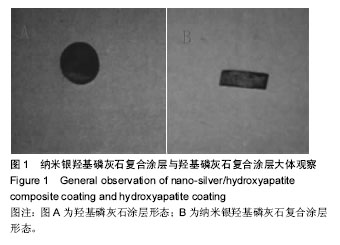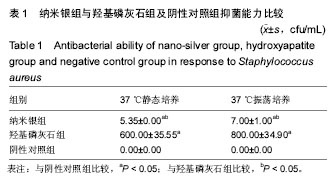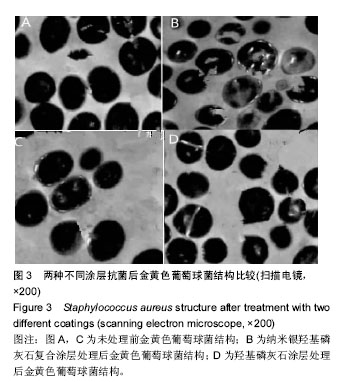中国组织工程研究 ›› 2018, Vol. 22 ›› Issue (14): 2185-2189.doi: 10.3969/j.issn.2095-4344.0795
• 纳米生物材料 nanobiomaterials • 上一篇 下一篇
纯钛表面纳米银涂层构建方法及对金黄色葡萄球菌抗菌性能的影响
王复超,王明伟,李华壮,王善涛,赵光宗
- 潍坊市益都中心医院,山东省潍坊市 262500
Construction of nano-silver coating on pure titanium surface and its antibacterial effect on Staphylococcus aureus
摘要:
文章快速阅读:
.jpg)
结果和结论:①纳米银羟基磷灰石复合涂层与羟基磷灰石复合涂层一般形态表面涂层相对均匀。纳米银羟基磷灰石复合涂层颜色略呈白色但是略带黄,羟基磷灰石复合涂层钛片呈白色,涂层表面毛糙,结合牢固,均未见涂层剥脱;②纳米银组在37 ℃静态培养与37 ℃振荡培养抑菌能力,均高于羟基磷灰石组(P < 0.05);③纳米银羟基磷灰石复合涂层在7,10,30 h对金黄色葡萄球菌600 nm吸光度值均低于羟基磷灰石复合涂层(P < 0.05);④与羟基磷灰石涂层相比,纳米银羟基磷灰石复合涂层细胞颜色变浅,存在破裂死亡的细胞,并且金黄色葡萄球菌数量减少,存在大量空泡;⑤结果提示:以20∶1比例的微米羟基磷灰石与微米银球磨经水浴、超声及热处理后成功构建纳米银涂层,该涂层在金黄色葡萄球菌中能发挥优越抗菌效果。
ORCID: 0000-0001-6106-1470(李华壮)
中图分类号:



